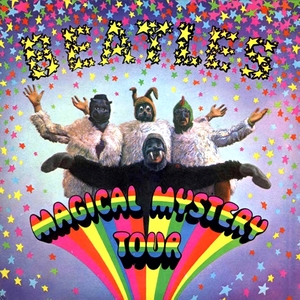Luke Chapter 9 begins with Jesus bestowing the power of casting out devils to his apostles.
Jesus is bestowing a power that it appears that he has, to his disciples (his apostles, if we assume “his twelve” to mean that). This - and other similar statements - appear to be the basis of “apostolic succession” and the idea that clergy can assume similar powers. At least, I believe that this thinking prevails in the Catholic Church. In this chapter we get Loaves and Fishes, exorcism, teaching and parables. Particularly, Jesus is in favor of exorcism no matter who’s doing it:1 Then he called his twelve disciples together, and gave them power and authority over all devils, and to cure diseases.
2 And he sent them to preach the kingdom of God, and to heal the sick.
Finally, he makes this opaque statement:49 And John answered and said, Master, we saw one casting out devils in thy name; and we forbad him, because he followeth not with us.
50 And Jesus said unto him, Forbid [him] not: for he that is not against us is for us.
...that is probably mansplained somewhere like the Matthew Henry commentary from c. 1706. I won’t detour there right now, because I find the ambiguous, even opaque nature of the Bible to be one of its truly endearing features. That people claim this is divinely inspired *and inerrant* is an unending source of amusement to me.61 And another also said, Lord, I will follow thee; but let me first go bid them farewell, which are at home at my house.
62 And Jesus said unto him, No man, having put his hand to the plough, and looking back, is fit for the kingdom of God.<>
In Chapter 10 Jesus enlists some advance men to smooth the way for his Magical Ministry Tour:

Much of Luke 10 is not found in Mark but is found in Matthew, so it’s worth reading with your copy of Gospel Parallels handy.1 After these things the Lord appointed other seventy also, and sent them two and two before his face into every city and place, whither he himself would come.
Chapter 11 opens with Jesus teaching the disciples The Lord’s Prayer. I’ve mentioned “pericopes” contained in one or the other NT chapter, so it doesn’t hurt to list them out for this chapter, without immediate comment: “The Importunate Friend at Midnight”, “Encouragement and Answer to Prayer”, “The Beelzebub Controversy”, “The Return of the Unclean Evil Spirit”, “True Blessedness”, “The Sign of Jonah, “Concerning Light”, “The Sound Eye” and “Discourses against the Pharisees and Lawyers”.
You get the sense that there is a mixture of the spiritual, the natural and the political in these passages, with the discourse on Light being one that I can see being a general topic that any pre-scientific society would be mesmerized by. The association of good with light and evil with darkness ties together two of the great mysteries that might consume the minds of Bronze Age thinkers.
Where the previous chapter ends with the Pharisees appearing to scheme against Jesus, Chapter 12 appears to be one very long sermon to a very large throng of people. This might be considered a significant portion of “Luke’s Theology”.
Parallels
Luke 9 bridges the period described as “Jesus Ministry in Galilee” and “The Way to the Cross” - the former being sequenced in large part similarly to Mark and Matthew, while beginning with “The Way to the Cross”, the cross-references to Mark and Matthew become more out-of-sequence with more gaps. Notice also that almost none of these four chapters have parallels to The Book of John.
No comments:
Post a Comment